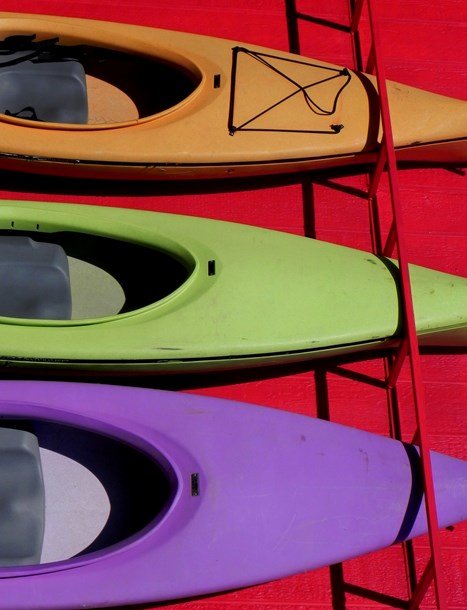
Western photographer Katherine Minott moves in close in color and black and white.
Her closeups — abstracts as well as things recognizable — explore “the beauty hidden in every day objects, the sacred hidden in the mundane.” Her subjects from broken eggs and weathered wood to purple kayaks and hot pink splattered paint, highlight intense contrasts and intimate observation.
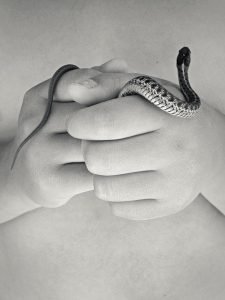
Minott equally enjoys shooting in color and black and white. “Often black and white lends itself to capturing the ‘soul’ of something, like a tree with sunlight streaming through leaves,” she says. “There’s no color to potentially distract, thus focus is on the shape and relationship of things. There is no green to shout ‘Leaf!’” Black and white, she feels lends a certain timelessness and intrigue to the image. “Our relationship to a rose, for instance, comes at the expense of not associating it with what usually hits first: its color. We can form a new relationship to it, one emphasizing shape and texture as Robert Mapplethorpe’s black and white flower images do.
“I like using color best when making abstract images. A rusted piece of steel shows itself not only in red, but orange, yellow, and even blue. Rust becomes polychrome and ripe for visual rediscovery.” Minott discovers her subjects “in classrooms disguised as junkyards, abandoned ranches, hoarders’ backyards, and long-forgotten trailer parks—all scattered about the desert Southwest where the sun works its magic.”
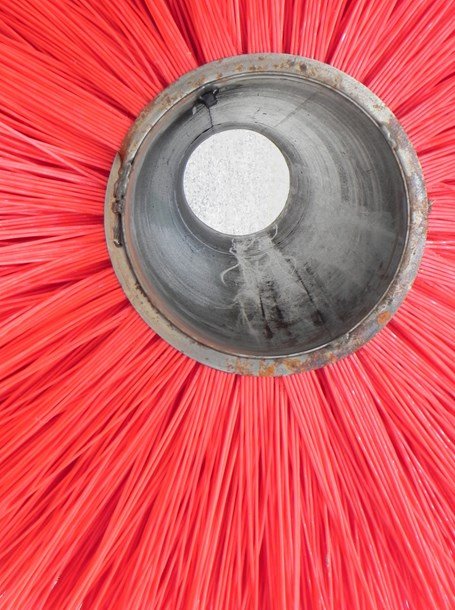
A native of Harvard, Massachussetts, Minott moved to the West Coast for college and now lives in Prescott, Arizona. Largely a self taught photo-grapher, she’s taken a darkroom class and claims photography as part of her family lineage. “My grandfather visited always with a manual camera and encouragement for his subjects including me; he was the self-appointed record keeper of family events. My father worked as an experimental machinist for Polaroid for over 30 years. As a child, I loved the magical element of the instant Polaroid camera, some- thing so immediate and abundant given the many packs of outdated or damaged film my father brought home. My brother worked as a biomedical photographer for a practice of eye doctors.”

Minott admires the work of abstract expressionist photographer Aaron Siskind, especially his details of nature and architecture. “He elevated the mundane to heights of visual poetry. He looked at peeling paint and the surfaces of asphalt as a canvas worthy of record and celebration. His images inspired me to really see the magic in things underfoot and in disrepair.”
Over time, Minott says she also feels more attraction and influence of the Japanese aesthetic of wabi-sabi, “an intuitive way of living that emphasizes finding beauty in imperfection, and accepting the natural cycle of growth and decay. This aesthetic is the celebration of things imperfect, impermanent and incomplete.
“I used to try to control my focus of subject matter, declaring,’Today I will visit a local junkyard and document the hubcaps and 50-gallon barrels.’ I was on the prowl and very much agenda-driven. Nowadays, I take more of a wait-and-see approach, becoming an observer and recipient of whatever crosses my path.
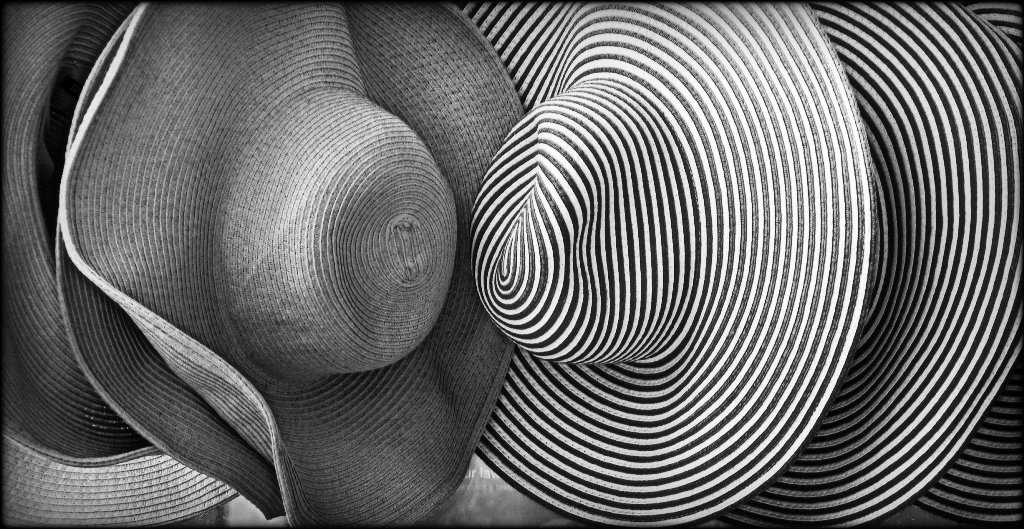
“Recently shopping at Home Depot, I looked up to see a row of garden hats for sale. They became the subjects of Mad Summer Hatter. My friend and photography instructor Steve Hoover calls these moments a ‘visit from the Photo Gods.’
“I just moved to the mountains outside of Prescott. My home is a three-minute walk to the National Forest, a sanctuary I visit each morning with my dog and camera in-tow. There’s an abundance of ponderosa pine, scrub oak, and alligator juniper – covering 1000s of acres where drought, wildfire, controlled burns, high winds, and blight have made their mark. I have recorded the intimate detail of these trees’ struggles in my new series Woodstock. It is a textural fete of bark, wood grain, charcoal, and burls.”
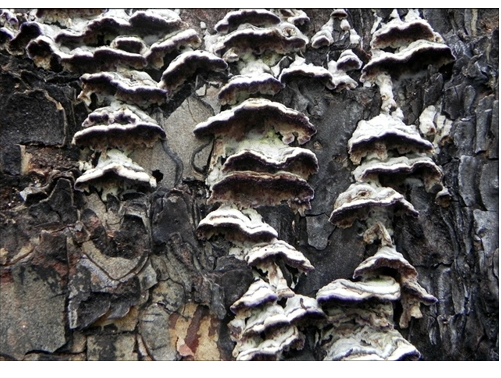
Minott’s work has been shown in galleries in North Carolina, California, Arizona and New Mexico. A winner in the 2014 New Mexico Magazine photo contest, her photographs have also appeared in Camas: The Nature of the West, Visual Language Magazine, and the Santa Fe Reporter’s Annual Manual.

To see more of Minott’s photographs visit www.katherineminott.com.
–Elizabeth Meade Howard, Art Editor
Featured image: Close Roof
Follow us!Share this post with your friends.
